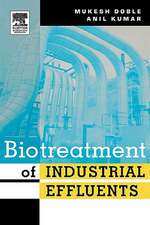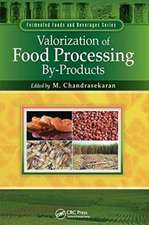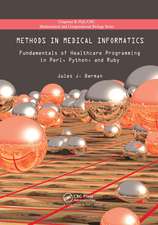Biotechnology in the Pulp and Paper Industry: 8th ICBPPI Meeting: Progress in Biotechnology, cartea 21
Editat de L. Viikari, R. Lanttoen Limba Engleză Hardback – 11 iun 2002
Preț: 1182.44 lei
Preț vechi: 1619.78 lei
-27% Nou
Puncte Express: 1774
Preț estimativ în valută:
226.25€ • 236.23$ • 187.26£
226.25€ • 236.23$ • 187.26£
Carte tipărită la comandă
Livrare economică 04-18 aprilie
Preluare comenzi: 021 569.72.76
Specificații
ISBN-13: 9780444510785
ISBN-10: 0444510788
Pagini: 344
Ilustrații: 1
Dimensiuni: 156 x 234 x 21 mm
Greutate: 0.66 kg
Ediția:00008
Editura: ELSEVIER SCIENCE
Seria Progress in Biotechnology
ISBN-10: 0444510788
Pagini: 344
Ilustrații: 1
Dimensiuni: 156 x 234 x 21 mm
Greutate: 0.66 kg
Ediția:00008
Editura: ELSEVIER SCIENCE
Seria Progress in Biotechnology
Cuprins
Preface. Trends in pulp and paper biotechnology (L. Viikari). Biotechnology in the pulp and paper industry. A challenge for change (A. Ragauskas). Structure and fibre modification.
Alterations of lignin biosynthesis have tissue-specific impact on cell wall formation (K. Ruel, M.-D. Montiel, J.-P. Joseleau). Cellulases: Agents for fiber modification or bioconversion? The effect of substrate accessibility on cellulose enzymatic hydrolyzability (A.R. Esteghlalian, S.D. Mansfield, J.N. Saddler). Lignocellulose oxidation by low molecular weight metal-binding compounds isolated from wood degrading fungi: A comparison of brown rot and white rot systems and the potential application of chelator-mediated Fenton reactions (B. Goodell et al.). Dislocations and balloon swelling in spruce kraft pulp fibres - Effect of cellulases, xylanase and laccase/HBT (P. Ander). Biopulping. Recent developments in biopulping technology at Madison, WI (G.M. Scott et al.). Attempts to correlate biopulping benefits with changes in the chemical structure of wood components and enzymes produced during the wood biotreatment with Ceriporiopsis subvermispora
(A. Ferraz et al.). Fungi as potential assisting agents in softwood pulping (A. Hatakka et al.). Fundamentals of oxidative enzymes. (N-Hydroxy mediated laccase biocatalysis: recent progress on its mechanism and future prospect of its application (F. Xu, K. Li, T.J. Elder). Metal-activated laccase promoters (V. Faraco et al.). Protease mediated processing of a Cu-induced laccase in Pleurotus ostreatus: a natural approach to improve protein stability (P. Giardina et al.). Reactivity of high and low molar mass lignin in the laccase catalysed oxidation (M.-L. Niku-Paavola et al.). The effect of oxidation with single electron oxidants compared to laccase treatment of TMP wood fibres (S. Barsberg, J. Hassingboe). Studies on inactivation and stabilization of manganese peroxidase from Trametes versicolor (H. Bermek, K. Li, K.-E.L. Eriksson). Applications of oxidative enzymes.
Delving into the fundamental LMS delignification of high-kappa kraft pulps (R.P. Chandra et al.). Elucidating of effects of laccase on the physical properties of high-kappa kraft pulps (R.P. Chandra, A.J. Ragauskas). New developments in enzyme-assisted delignification and bleaching (H.P. Call). In vivo and in vitro biobleaching of unbleached hardwood kraft pulp by a marine fungus, Phlebia sp. MG-60 (X. Li, R. Kondo, K. Sakai). Potential of laccases in softwood-hardwood high-yield pulping and bleaching (M. Petit-Conil et al.). Pilot plant bleaching trials with laccase and mediator (M. Paice et al.). Flax pulp bleaching and residual lignin modification by laccase-mediator systems (S. Camarero O. García et al.). Biomimetic pulp bleaching with copper complexes and hydroperoxides (K. Fackler et al.). Enzymatic degradation of oxalic acid for prevention of scaling
(N.-O. Nilvebrant et al.). Xylanases and enzyme-assisted bleaching. Expression of thermophilic xylanases in fungal hosts (P.L. Bergquist et al.). Evaluation of bleach-enhancing effect of xylanases on bagasse pulp (S. Bissoon, S. Singh, L. Christov). Boosting of LMS bleaching with hemicellulases (T. Oksanen et al.). Mill usage and mechanistic studies of xylanase to enhance bleaching (J.S. Tolan, C. Popovici). Pulp and paper manufacture. Enzymatic control of dissolved and colloidal substances during mechanical pulping (J. Buchert, A. Mustranta, B. Holmbom). Enhancement of TMP reject refining by enzymatic modification of pulp carbohydrates - A mill study (J. Pere et al.). Improved papermaking by cellulase treatment before refining (U.-B. Mohlin, B. Pettersson). The effects of recombinant Cellulomonas fimi &bgr;-l,4-glycanases on softwood kraft pulp fibre and paper properties (S.D. Mansfield et al.). Enzyme treatments for improved retention in newsprint stocks (I.D. Reid, M. Ricard). Potential of enzymatic deinking (L. Magnin, P. Delpech, R. Lantto).
Alterations of lignin biosynthesis have tissue-specific impact on cell wall formation (K. Ruel, M.-D. Montiel, J.-P. Joseleau). Cellulases: Agents for fiber modification or bioconversion? The effect of substrate accessibility on cellulose enzymatic hydrolyzability (A.R. Esteghlalian, S.D. Mansfield, J.N. Saddler). Lignocellulose oxidation by low molecular weight metal-binding compounds isolated from wood degrading fungi: A comparison of brown rot and white rot systems and the potential application of chelator-mediated Fenton reactions (B. Goodell et al.). Dislocations and balloon swelling in spruce kraft pulp fibres - Effect of cellulases, xylanase and laccase/HBT (P. Ander). Biopulping. Recent developments in biopulping technology at Madison, WI (G.M. Scott et al.). Attempts to correlate biopulping benefits with changes in the chemical structure of wood components and enzymes produced during the wood biotreatment with Ceriporiopsis subvermispora
(A. Ferraz et al.). Fungi as potential assisting agents in softwood pulping (A. Hatakka et al.). Fundamentals of oxidative enzymes. (N-Hydroxy mediated laccase biocatalysis: recent progress on its mechanism and future prospect of its application (F. Xu, K. Li, T.J. Elder). Metal-activated laccase promoters (V. Faraco et al.). Protease mediated processing of a Cu-induced laccase in Pleurotus ostreatus: a natural approach to improve protein stability (P. Giardina et al.). Reactivity of high and low molar mass lignin in the laccase catalysed oxidation (M.-L. Niku-Paavola et al.). The effect of oxidation with single electron oxidants compared to laccase treatment of TMP wood fibres (S. Barsberg, J. Hassingboe). Studies on inactivation and stabilization of manganese peroxidase from Trametes versicolor (H. Bermek, K. Li, K.-E.L. Eriksson). Applications of oxidative enzymes.
Delving into the fundamental LMS delignification of high-kappa kraft pulps (R.P. Chandra et al.). Elucidating of effects of laccase on the physical properties of high-kappa kraft pulps (R.P. Chandra, A.J. Ragauskas). New developments in enzyme-assisted delignification and bleaching (H.P. Call). In vivo and in vitro biobleaching of unbleached hardwood kraft pulp by a marine fungus, Phlebia sp. MG-60 (X. Li, R. Kondo, K. Sakai). Potential of laccases in softwood-hardwood high-yield pulping and bleaching (M. Petit-Conil et al.). Pilot plant bleaching trials with laccase and mediator (M. Paice et al.). Flax pulp bleaching and residual lignin modification by laccase-mediator systems (S. Camarero O. García et al.). Biomimetic pulp bleaching with copper complexes and hydroperoxides (K. Fackler et al.). Enzymatic degradation of oxalic acid for prevention of scaling
(N.-O. Nilvebrant et al.). Xylanases and enzyme-assisted bleaching. Expression of thermophilic xylanases in fungal hosts (P.L. Bergquist et al.). Evaluation of bleach-enhancing effect of xylanases on bagasse pulp (S. Bissoon, S. Singh, L. Christov). Boosting of LMS bleaching with hemicellulases (T. Oksanen et al.). Mill usage and mechanistic studies of xylanase to enhance bleaching (J.S. Tolan, C. Popovici). Pulp and paper manufacture. Enzymatic control of dissolved and colloidal substances during mechanical pulping (J. Buchert, A. Mustranta, B. Holmbom). Enhancement of TMP reject refining by enzymatic modification of pulp carbohydrates - A mill study (J. Pere et al.). Improved papermaking by cellulase treatment before refining (U.-B. Mohlin, B. Pettersson). The effects of recombinant Cellulomonas fimi &bgr;-l,4-glycanases on softwood kraft pulp fibre and paper properties (S.D. Mansfield et al.). Enzyme treatments for improved retention in newsprint stocks (I.D. Reid, M. Ricard). Potential of enzymatic deinking (L. Magnin, P. Delpech, R. Lantto).























